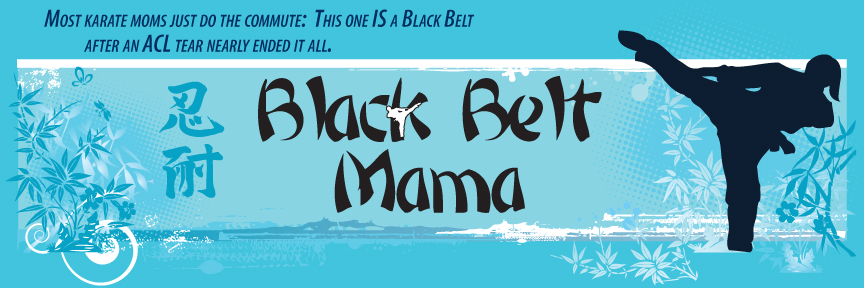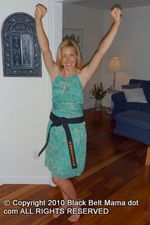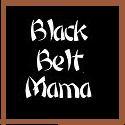April 6, 2009
What is Sometimes Hidden, You Oversee
Not long ago I was bestowed the honorable certificate Of Kyoshi, through my Sensei, organization, and my peers (some of whom also share the same rank of Kyoshi). I was never the exceptionally talented student of the Dojo, but have received the complimentary nod of approval over the past thirty six years. I wrote an article last year for Admired Martial Artists on “ Kanjo “ Emotion, I hope some of you read and benefited from that advice. There are more qualified Sensei and Instructors out there who can train you physically and answer your questions, bettering your Martial Arts abilities than I could tell you, so I will let their advice take that precedence.
I am not an authority or claim to be one on martial arts behavior. I try to echo the words of the Sensei, Masters, Warriors, Philosophers, and Authors who have traveled that arduous road before me. Maybe I can relay to you some of their wisdom and thoughts, and you can draw your own conclusion, which might give some insight, on your journey, down the path of the Budoka’s Michi.
Kakusareta Hidden!
I was sitting on the floor in front of some spacious windows at my house with my note pad, contemplating what I should write this year. My minds attention was diverted to the sight of this large tree, and since it’s March there are no leaves, and it stood out predominantly against the crisp pale sky.
The tree contained a large main trunk, the same width and height (reminiscent of an average person), which then split into three main branches maybe four inches in diameter. From there three main limbs spewed, many smaller limbs, which grew many smaller branches to the hundreds of finest stems shooting upwards towards the heavens. I thought to myself, how convenient that I have found such a Shinto Metaphor. A somewhat comparative duality to the “ Deshi “ (the student), and Nature. The trunk, big and strong, being the Deshi, and the limbs being his or her arms and hands. What amazed me was how crystal clear the finest branches were, with its hundreds of stems going all different directions, reaching out into the sky, and I thought, this somewhat reflects the Deshi’s mind!
Miushinau to Lose Sight Of.
A new student usually physically excels rapidly, their abilities and body take a different shaping – stronger, faster, healthier, balanced (like a strong trunk) in a relatively short amount of Dojo time. As their skills continue to flourish, they start to reach plateaus in their training, which tend to get longer, and the Deshi starts to struggle psychologically. This mental struggle seems to continue no matter how hard they try to overcome certain aspects in their training. So they start looking elsewhere and expanding their mental branches, trying new technical electronic training devises, the newest up to date modern information, supplemented training regiments, which invigorates some enthusiasm to override this state of stale progression, but usually is a short term experience. Ultimately, they learned something new, but the form or technique that they struggle to comprehend is not new, it is of the old ways. So as students plateau they also experience a circling factor where they continue to encounter the same kinds of problems on various different levels.
After awhile students tend to question why they are spending so much time tormenting themselves, practicing some ancient and feudal art that has no value in modern society. They also hear the voices of their spouses and families expressing concern and discontent.
Why keep on going through this emotional roller coaster, of anxiety, sore muscles, and injuries that are inevitable in training? Why strive for a goal that is certainly unreachable?
While many budoka do indeed quit, some are filled with a strange sense, a slight hint at first that may seem like the feeling of guilt. The source of this anxiety is different though, it is actually a glimmering reflection of the Bushido. This sense or feeling has been unconsciously instilled in a practitioner throughout their training in the form of giri, or moral obligation. Through giri it becomes honorable to uphold oneself and the Mudansha and Yudansha that train hard and sweat right along side of you. This is one of the unreachable destinations of classical martial arts in that one needs courage, strength, and fortitude to forge oneself like steel, to face adversity, to endure all the barriers and trials in the Dojo and most of all, out of the Dojo in this modern world we face each day.
This is how the Martial Arts fit to modern society, not in battling your opponent, but waging the war of the self.
It is the forging of the self that makes responsibility and moral obligation, the technique to shaping better adults. This is the arduous road or path that we as martial artists travel, that the Budoka overcomes and shares the Spirit with fellow Deshi.
Let's look at the part of the Tree you don’t see. The Japanese word is ” Ne “(pronounce like neh ) Roots, or ” Nezuku ” to grow Roots, which metaphorically if you're following along,” Konpon “means Origin, or Foundation.
The Tree is just as vast below the surface as it is above the surface, and this is what maintains its balance in all types of weather. The soil “Tsuchi” (pronounce soo chee) and Ne, roots are what nourishes the Tree. Similar in the Martial Arts, Asian Heritage, Cultural, Spiritual, Religious and Ethical elements and principles, are the many facets and arteries that are deeply instilled within, and fuel the Arts themselves.
In recent years we’ve had the luxury of better understanding the roots of the tree through the help of Articles, Books, Films, and Music (parts of culture that previous generations couldn’t have had access to). Here in these chronicles, articles and stories is the Spirit, Courage, Honor, Bravery, Perseverance, Etiquette and Rituals, which through these Masters, Warriors, Sensei, Ryu, Priests, Scholars, Craftsmen, and Musicians are told the Hardships and Trials and Triumphant justice against countless odds. Whether it be the Battlefield or Dojo, the soothing melody of the Shakuhachi or the thundering of Taiko drums, to the Solitude of Poetry, to the Vibrations of the Buddhist Mantra or the Temple Bell, or to that quite distinctive taste of Sushi and Sake. The list could go on an on! The Physical Training still remains the same at the outer form, but it is this time to develop the inner form.
The inner self, this is also priority to daily training. Maybe something, in these elements might have that fuel, for you to forge ahead, to uplift your spirit, to divert some time to nourish the mind, not only the road of the body. Lastly there is an old book Written by a Samurai named Yamamoto Tsunetomo; it is stories of Samurai and their life and a way of behavior and response to that behavior in the Fuedal times they lived. But here I am just going to use the title as a fuse to start your search for answers. Its called “ HAGAKURE ” Hidden behind the Leaves.
As every Sensei continues to say, “ Keep Training!"
Sayonara Z san.
* * *
I would like to acknowledge and credit and list some authors and their books who write so in-depth and eloquently on the subjects that you just read about. You can order these at any bookstore. Also a list of some Music CD’s that have a variety of Traditional and Modern variations of Traditional Japanese Music, which also can be acquired at certain book stores.
Sword and Brush : The Spirit of the Martial Arts. by Dave Lowry
Traditions : Essays on the Japanese Martial Arts and Ways. by Dave Lowry
Furyu the Budo Journal. by Wayne M. Muromoto this is a Quarterly Magazine.
Japan: Kabuki & Other Traditional Music by Ensemble Nipponia Nonsuch Rec
Samurai Collection by Various Artists : Pacific Moon Records.
EASTWIND by Masayuki KOGA : Fortuna Records.
The linked books and musical selections above can also be purchased through The BBM Review store via Amazon. Just click on the link.
This is your last chance to leave a comment and be entered to win one of the Admired Martial Artists month giveaways.
























Oh thank you for this! It really makes sense and you sound very much like the Dans in my dojang. It is wonderful and very well received!
Beautiful, eloquent, succinct.
White, Gold, Orange, Green, Purple, Blue, Red, Brown, Black:
These are colors of the journey, never destinations.